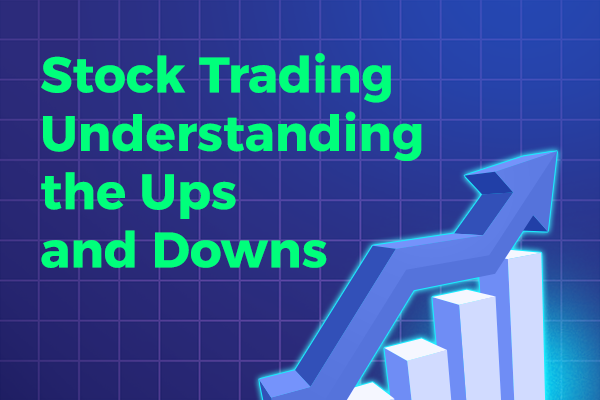Why Fundamentals Analysis Should be at the Core of Your Investment Strategy
If you’re someone who invests their money in the stock market, you’ve likely heard the terms “fundamental analysis” and “technical analysis” thrown around. While both have their merits, it’s important to understand why fundamental analysis should be at the core of your investment strategy.
In short, fundamental analysis looks at the underlying financial and economic factors of a company to determine its intrinsic value, while technical analysis looks at charts and trends to make investment decisions.
While technical analysis can be helpful in the short term, it’s fundamental analysis that truly allows investors to make informed decisions for the long term.
By understanding a company’s financial health, competitive landscape, and industry trends, investors can make educated predictions about its future success. So, whether you’re new to investing or a seasoned pro, it’s crucial to remember that the fundamentals should always be the foundation of your strategy.
What is fundamental analysis?
Fundamental analysis is the process of evaluating a company to determine its intrinsic value by examining its financial and economic factors, including revenue, earnings, assets, liabilities, and growth potential. This type of analysis involves studying a company’s financial statements, industry trends, and competitive landscape to gain insight into its future prospects.
It’s important to note that fundamental analysis is not a one-size-fits-all approach; rather, it’s a flexible method that can be adapted to fit the needs of individual investors.
There are several key metrics that fundamental analysts use to evaluate a company’s financial health, including price-to-earnings ratio (P/E), price-to-book ratio (P/B), return on equity (ROE), and debt-to-equity ratio (D/E). These metrics are used to assess a company’s profitability, efficiency, and financial stability, and can help investors make informed decisions about whether to buy, hold, or sell a particular stock.
Comparison of fundamental analysis and technical analysis
While fundamental analysis and technical analysis are both used to evaluate stocks, they approach the task from different angles. Technical analysis looks at charts and trends to identify patterns and make investment decisions, while fundamental analysis looks at the underlying financial and economic factors of a company to determine its intrinsic value.
One of the key differences between the two approaches is that technical analysis is focused on short-term trading, while fundamental analysis is geared towards long-term investing.
Technical analysts use charts and other technical indicators to identify short-term price movements and make trades accordingly, while fundamental analysts focus on a company’s financial health, competitive landscape, and industry trends to make informed decisions about its long-term prospects.
While both approaches have their merits, it’s important to remember that fundamental analysis is essential for long-term investors looking to build wealth over time.
Basic principles of fundamental analysis
The basic principles of fundamental analysis involve examining a company’s financial statements, industry trends, and competitive landscape to gain insight into its future prospects. This involves looking at a variety of metrics, including revenue, earnings, assets, liabilities, and growth potential, to determine a company’s intrinsic value and potential for future growth.
Fundamental analysts also look at macroeconomic factors, such as interest rates, inflation, and government policies, to gain a broader understanding of the economic environment in which a company operates.
This can help investors make informed decisions about which stocks to buy, hold, or sell based on their individual investment goals and risk tolerance.
Causes and indicators of a bear market
A bear market is typically characterized by falling stock prices, high unemployment rates, and a weak economy. When the economy is struggling, investors become cautious about buying stocks, and this leads to lower demand and prices.
Some of the key indicators of a bear market include low volumes of trading activity, declining corporate earnings, and high interest rates.
In a bear market, investors tend to focus on defensive stocks, which are companies that are less sensitive to economic cycles. These stocks typically have low price-to-earnings ratios and are considered to be more stable. Examples of defensive stocks include utilities, consumer staples, and healthcare companies.
Strategies for trading in a bear market
Trading in a bear market can be challenging, but there are strategies you can use to manage risk and take advantage of opportunities. One approach is to invest in bonds, which are debt securities issued by companies or governments. Bonds provide a fixed income stream and can help protect your portfolio from the volatility of the stock market.
Another strategy is to invest in value stocks, which are companies that are trading at a discount to their intrinsic value. Value stocks tend to be less affected by market downturns and can provide a good long-term investment opportunity. Examples of value stocks include Berkshire Hathaway, JP Morgan, and Intel.
Understanding market cycles
Market cycles are an inevitable part of the stock market. They can be difficult to predict, but understanding them can help you make informed decisions and stay ahead of the curve. Market cycles typically follow a pattern of expansion, peak, contraction, and trough. During the expansion phase, stock prices are rising, and investors are optimistic.
During the peak phase, stock prices have reached their highest point, and investors become cautious. During the contraction phase, stock prices are falling, and investors are pessimistic. During the trough phase, stock prices have hit their lowest point, and investors start to become optimistic again.
Understanding market cycles can help you make informed decisions about when to buy and sell stocks. It’s important to remember that market cycles are not always predictable, and there is always a risk involved in investing in the stock market.
Common mistakes to avoid in stock trading
There are several common mistakes that investors make when trading in the stock market. One of the most common mistakes is trying to time the market. Trying to predict when the market will go up or down is extremely difficult, and it can lead to missed opportunities and losses.
Another mistake is not diversifying your portfolio. Investing in a single stock or sector can be risky, as a downturn in that particular stock or sector can have a significant impact on your portfolio. Diversifying your portfolio across different stocks, sectors, and asset classes can help minimize risk.
Managing risk in stock trading
Risk management is a crucial part of stock trading. It’s important to have a strategy in place to manage risk and minimize losses. One approach is to set stop-loss orders, which are orders to sell a stock when it reaches a certain price. This can help limit losses in the event of a sudden downturn in the market.
Another approach is to use options, which are contracts that give you the right to buy or sell a stock at a certain price. Options can be used to hedge against losses and provide protection for your portfolio.
Conclusion: Long-term success in stock trading
Stock trading can be a challenging and rewarding pursuit. Understanding the ups and downs of the stock market is crucial to making informed decisions and achieving long-term success.
Whether you’re trading in a bull market or a bear market, it’s important to have a strategy in place to manage risk and take advantage of opportunities.
Remember to diversify your portfolio, avoid common mistakes, and stay informed about market cycles and trends. With patience, discipline, and a long-term perspective, you can achieve your financial goals in the exciting world of stock trading.
In conclusion, the world of stock trading can be complex and challenging, but it can also be an exciting and rewarding pursuit. Understanding the underlying factors that drive market movements is crucial to making informed decisions and achieving long-term success.



